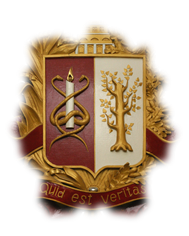Issue: 2016, Vol. 21, No. 2
CIRCADIAN RHYTHM OF ARTERIAL PRESSURE IN PATIENTS WITH ARTERIAL HYPERTENSION AND HYPERCHOLESTEROLEMIA IN DEPENDENCE ON VASCULAR CEREBRAL INSUFFICIENCY MANIFESTATION
- Keywords
- arterial hypertension, discirculatory encephalopathy, hypercholesterolemia, daily profile of arterial pressure
- Abstarct
- Objective - to define the peculiarities of circadian rhythm of arterial pressure in patients with arterial hypertension and hypercholesterolemia in dependence on vascular cerebral insufficiency manifestation. Material and methods . 84 patients (average age 50,6 ± 0,6 years) with arterial hypertension (the disease duration - 15,3 ± 0,8 years) were examined in Tver regional hospital. At that time all patients were administered planned hypotensive therapy but did not take hypolipidemic preparations. 46 patients without cerebral disorders were enrolled into 1 group, 22 persons with initial signs of cerebral blood supply insufficiency composed 2 group, 16 patients with dyscirculatory encephalopathy of I and II stages were enrolled into 3 group. Daily profile of arterial pressure and lipid metabolism indices were analyzed. Results . The rise of triglyceride fraction at moderately heightened total cholesterol level was found in patients with arterial hypertension without vascular cerebral insufficiency signs. High level of blood plasma total cholesterol along with the increase of triglyceride and lipoproteins of low density was revealed in patients with initial signs of cerebral blood supply insufficiency. High level of total cholesterol and statistically significant increase of triglyceride and lipoproteins of low density level to high parameters was detected in patients with discirculatory encephalopathy of I and II stages. Morning rise speed of systolic arterial pressure and diastolic arterial pressure was statistically significant in patients with initial signs of cerebral blood supply insufficiency in comparison with the patients without cerebral disorders. The rises of night indices of systolic arterial pressure, variability of daily indices of systolic arterial pressure, systolic arterial pressure time index were statistically significant in patients with discirculatory encephalopathy of I and II stages in contrast to the patients without vascular cerebral insufficiency; morning rise speed of systolic arterial pressure and diastolic arterial pressure was statistically significant in third group in comparison with patients of first and second groups. The most number of “nondippers” was registered in patients with arterial hypertension without vascular cerebral insufficiency; that of “nightpeakers” - among patients with initial signs of cerebral blood supply insufficiency. Statistically significant growth of “overdippers” number was marked while cerebral disorders severity increase. Conclusions . Average day and night systolic arterial pressure and diastolic arterial pressure, arterial pressure variability, morning rise speed of systolic arterial pressure and diastolic arterial pressure, number of “nightpeakers” and “overdipp” increased in vascular cerebral insufficiency progress.


 Нилова
Нилова